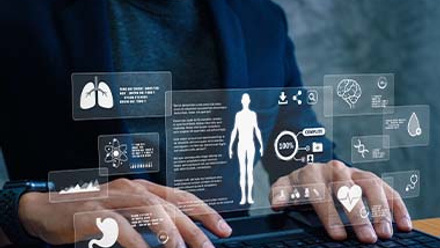Shift-work nutrition and wellbeing: 4 vital ways to support employees

Why are shift workers more at risk?
As a diurnal species designed to be active and to eat during the day, our bodies are geared to fasting at night. During those hours our blood sugars are regulated differently because our energy requirements would normally be very minimal. Our cells become less receptive to insulin, and what this means is that instead of converting our blood sugar into energy, we tend to store it as fat, as well as increasing blood triglyceride levels. Eventually this can set the scene for ‘insulin resistance’... in other words the phase that precedes diabetes type 2.
It’s much easier to gain weight around the middle when our metabolism is disrupted. One study showed that just three nights of poor sleep decreased insulin sensitivity by 30 per cent, even with the same number of hours. So imagine the impact of working through the night regularly over a period of time...
Eating ‘after hours’
There’s also of course the very practical question of meal choice at night. If making healthy choices during the day is a challenge for many, then it’s even harder for night workers, who have a very limited range of options. Understandably they’ll turn to ready meals or convenient high carb quick fuel that doesn’t contain much in the way of nutrients, such as bread and sweet snacks. Studies have shown that after six months of starting shift work, people tend to consume less fibre as their vegetable intake plummets.
Night and day workers consume similar amounts of calories, studies have shown, but their eating patterns are different. Night shift workers tend to snack instead of eating full meals. Partly because appetite is lower at night, but also because they sometimes might have to fit around convenient time slots. They also tend to consume more coffee, which can also carry risks by inducing more stress hormones.
So what can a responsible employer do to support shift workers and minimise these health risks?
1. Knowledge is power
Just as Asbestos Awareness or Manual Handling training are considered necessary where work involves related risks, nutrition & lifestyle education should also be seen as a must for shift workers. This training should include:
- An understanding of how our metabolism works
- Advice around timing -for example it’s best to try to eat at the beginning and end of the shift and minimise eating between midnight and 6am
- Coaching around meal planning -simple food preparation at home can help overcome the limited availability of healthy food available out of hours
- Guidance around nutrients -how to minimise foods which increase blood glucose as well as learn about the impact of certain micronutrients – iron rich foods are best avoided at night for example
- Coaching around beneficial lifestyle habits outside of work, including sleep hygiene, exercise and mindfulness
- Advice around prevention including regular blood glucose and vitamin D checks
2. Timing
Shift schedules should allow adequate time between shifts for sleep, meal preparation, exercise, relaxation and family time.
3. Facilities at work
Ideally employees should have access to a relaxed and sociable eating area. Eating in a relaxed environment helps stimulate a state of ‘rest and digest’ that’s more conducive to good digestion and absorption of nutrients.
4. Availability of food on-site
With staff restaurants often dark after hours, employees on night shift often have very limited options available to them. And these most often include high sugar snacks from vending machines and microwave meals low in nutrients. There are excellent healthier vending options now available which employers would do well to consider, as well as potentially stocking up staff kitchens with healthy options. It could be as simple as low sugar granolas, wholemeal bread and high protein spreads (sugar free peanut butter as an example) or blenders along with key ingredients for healthy, low sugar smoothies (meaning vegetables mainly, with limited fruit).
The author is Angela Steel, CEO at Superwellness.
This article is provided by Superwellness.
Supplied by REBA Associate Member, SuperWellness
Our mission is for nutrition-smart workplaces to become the norm.







